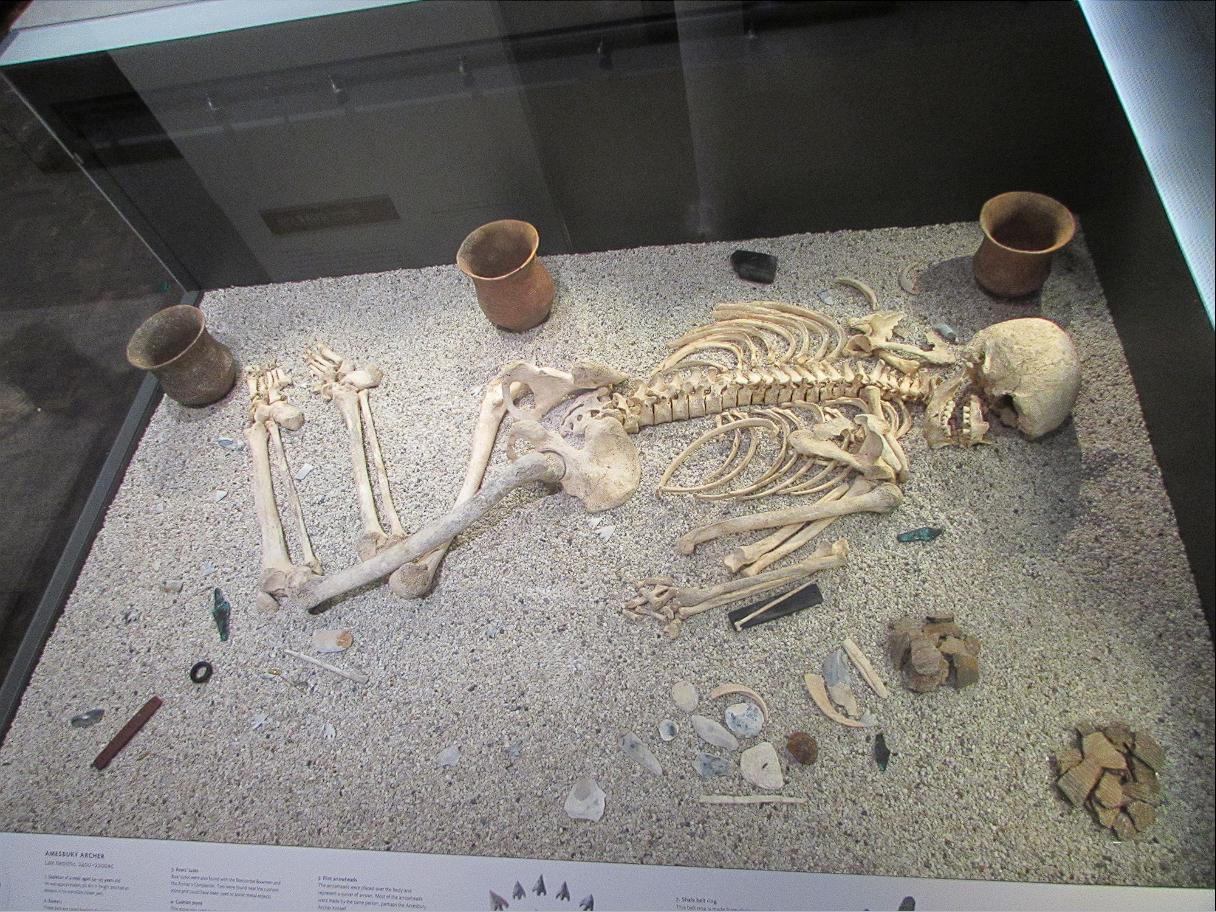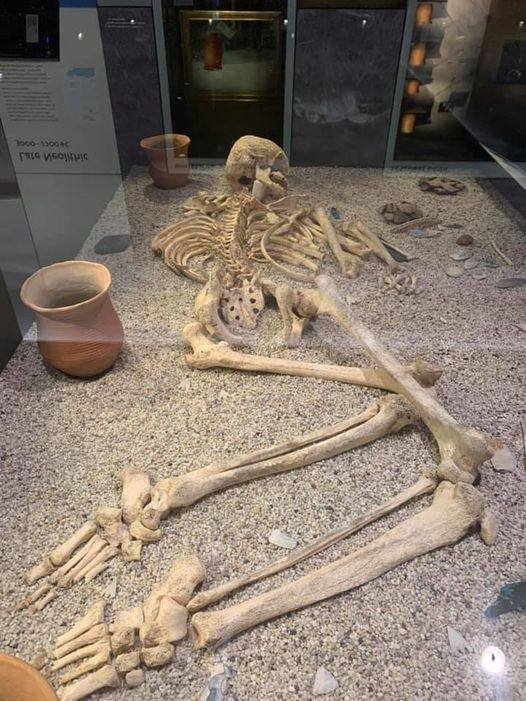The grave of the Amesbury Archer, a pivotal archaeological discovery near Stonehenge, provides a fascinating glimpse into the life of a high-status individual from over 4,000 years ago. This burial, rich in artifacts and revealing a man of continental origins, sheds light on the early Bronze Age and the cultural connections that shaped prehistoric Britain.
Discovering the Amesbury Archer: A Window to the Bronze Age
The excavation of the Amesbury Archer’s grave in 2002 revealed a wealth of information about Bronze Age society, trade, and personal stories.
Significant Archaeological Find
The Amesbury Archer’s burial is considered one of the most significant archaeological discoveries in Europe, offering unique insights into the early Bell Beaker period.

- Early Bell Beaker Burial:
- Dating back over 4,000 years, the burial is among the earliest Bell Beaker burials found in Britain, providing crucial chronological context.
- It was an early Bell Beaker burial.
- European Significance:
- Its European significance lies in the wealth of artifacts and the evidence of continental origins, highlighting the interconnectedness of Bronze Age cultures.
- It had European significance.
- Stonehenge Context:
- Its proximity to Stonehenge and the title “King of Stonehenge” underscore its importance in understanding the broader archaeological landscape of the region.
- It was in the Stonehenge context.
Burial Details
The Archer, estimated to be between 35 and 45 years old, was laid to rest in a wooden chamber beneath a low burial mound.
- Wooden Chamber Burial:
- The use of a wooden chamber for burial indicates a level of care and respect, suggesting the Archer’s high status.
- It was a wooden chamber burial.
- Age at Death:
- The estimated age at death provides insights into the life expectancy and health conditions of individuals during the Bronze Age.
- It showed age at death.
- Physical Condition:
- Skeletal remains revealed a severe leg injury, including a missing kneecap and bone infection, highlighting the challenges of life in prehistoric times.
- It showed physical condition.
Continental Origins
Scientific analysis of his tooth enamel suggests that he was not native to Britain, but rather from Central Europe, likely present-day Switzerland, Austria, or Germany.

- Tooth Enamel Analysis:
- Tooth enamel analysis provided concrete evidence of his continental origins, revealing his childhood location and migration patterns.
- It was tooth enamel analysis.
- Central European Roots:
- His Central European roots highlight the mobility of people during the Bronze Age and the spread of Bell Beaker culture.
- It showed Central European roots.
- Migration Patterns:
- His migration to the British Isles underscores the complex migration patterns and cultural exchanges that shaped prehistoric Europe.
- It showed migration patterns.
Wealth and Status: The Archer’s Grave Goods
The wealth of artifacts buried with the Amesbury Archer indicates his high status and connections to continental Europe.
Extraordinary Grave Goods
His burial contained an extraordinary number of grave goods, including pottery, arrowheads, tools, and gold ornaments, reflecting his wealth and importance.
- Variety of Artifacts:
- The variety of artifacts, from functional tools to decorative items, highlights the range of skills and activities associated with the Archer.
- It showed a variety of artifacts.
- Symbol of Status:
- The quantity and quality of the grave goods serve as a powerful symbol of status and wealth in Bronze Age society.
- It was a symbol of status.
- Continental Connections:
- Many of the artifacts suggest strong connections to continental Europe, indicating trade and cultural exchange.
- It showed continental connections.
Gold and Copper Objects
The gold hair ornaments and copper knives are among the oldest ever found in Britain, demonstrating the early introduction of metalworking technologies.
- Oldest Metal Objects:
- The gold and copper objects are significant for their age, marking the early use of metal in Britain and its association with high-status individuals.
- They were the oldest metal objects.
- Metalworking Technology:
- Their presence highlights the introduction of advanced metalworking technologies from continental Europe to the British Isles.
- They showed metalworking technology.
- Technological Advancement:
- These objects represent a technological advancement, reflecting the Archer’s role in bringing new skills and practices to Britain.
- They showed technological advancement.
Archery and Metalworking
Although buried with archery equipment, the presence of a cushion stone suggests that he was also a skilled craftsman, likely a metalworker.
- Archery Equipment:
- The archery equipment, including arrowheads and wristguards, indicates his role as a warrior or hunter, but also highlights his social standing.
- It included archery equipment.
- Cushion Stone Evidence:
- The cushion stone, a tool used in metalworking, provides evidence of his craft skills, suggesting that he was also a skilled artisan.
- It was cushion stone evidence.
- Skilled Craftsman:
- His dual role as a warrior and craftsman underscores the complexity of Bronze Age society and the importance of specialized skills.
- He was a skilled craftsman.
Power and Influence: The Amesbury Archer’s Legacy
The Amesbury Archer’s burial and artifacts suggest that he was a figure of power and influence, possibly introducing advanced metalworking techniques to Britain.
Introduction of Metalworking
Given that metalworking was a new and valuable skill at the time, it is possible that he introduced advanced techniques to Britain.
- New and Valuable Skill:
- Metalworking was a new and valuable skill, making the Archer’s expertise highly prized and contributing to his high status.
- It was a new and valuable skill.
- Advanced Techniques:
- His continental origins suggest that he brought advanced metalworking techniques to Britain, influencing the development of Bronze Age technology.
- He used advanced techniques.
- Technological Influence:
- This influence could explain the elaborate nature of his burial, as metalworkers were often buried with great wealth in continental Europe.
- He had technological influence.
Figure of Power and Influence
The Amesbury Archer’s burial and artifacts suggest that he was a figure of power and influence, possibly a leader or elite member of his community.
- High Status Burial:
- His high-status burial, with its wealth of artifacts, indicates that he was a person of considerable importance in his community.
- It was a high status burial.
- Leadership Role:
- The combination of warrior and craftsman skills suggests that he may have held a leadership role, contributing to the development of his community.
- He had a leadership role.
- Community Contribution:
- His contributions to metalworking and possibly other crafts would have made him a valuable member of his community, enhancing his influence.
- He had community contribution.
Salisbury Museum Display
The Amesbury Archer’s remains and grave goods are displayed at the Salisbury Museum in Wiltshire, England, allowing visitors to see this remarkable archaeological find.
- Museum Accessibility:
- The museum display makes this important archaeological find accessible to the public, fostering interest in Bronze Age history.
- It had museum accessibility.
- Educational Value:
- The display provides educational value, offering insights into the lives and culture of people who lived thousands of years ago.
- It had educational value.
- Historical Preservation:
- The Salisbury Museum plays a crucial role in preserving and showcasing the Amesbury Archer’s legacy, ensuring that his story continues to be told.
- It had historical preservation.
The Amesbury Archer’s grave is a significant archaeological discovery, offering a glimpse into the life of a high-status individual from the early Bronze Age. His continental origins, wealth of artifacts, and skilled craftsmanship highlight the interconnectedness of prehistoric Europe and the technological advancements that shaped early Britain. His legacy continues to captivate researchers and visitors, providing valuable insights into this pivotal period in human history.

CÁC TIN KHÁC
Mary Walton: The Forgotten Inventor Who Helped Clean Up America’s Cities
Tomb of Queen Nefertari in the Valley of the Queens, Egypt
Discover the Hypostyle Hall of the Temple of Hathor at Dendera
Venus de Losange: Unveiling the Mystery of a 20,000-Year-Old Paleolithic Icon